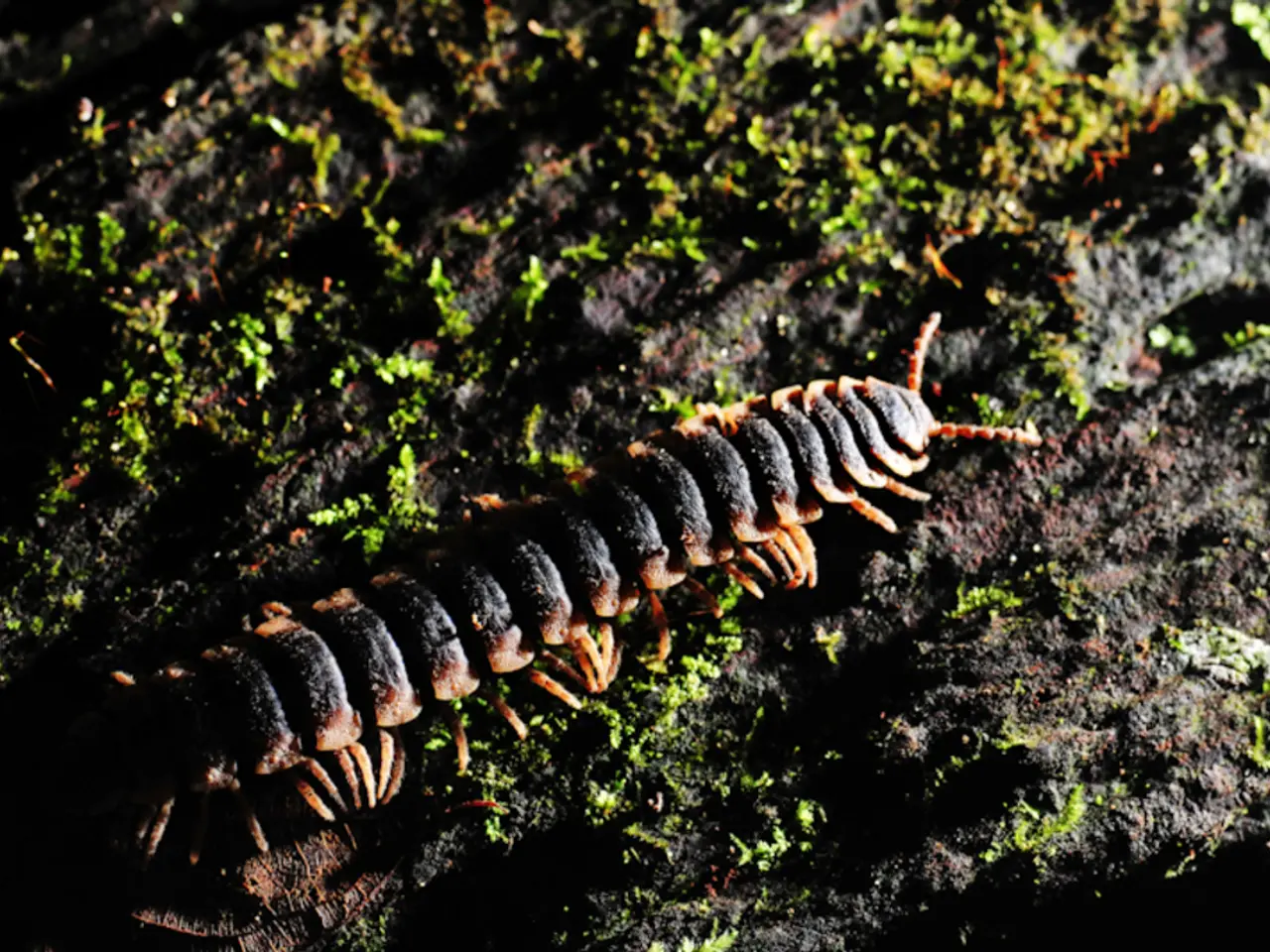Diatoms have been found to take in uranium.
In a recent study, it has been revealed that uranium can find its way into the food chain not only from nuclear power plants but also from a less expected source - phosphate fertilizers. An estimated 167 tons of uranium enter German fields annually due to this means, according to the Federal Research Centre for Agriculture.
This potential contamination in the food chain requires further study, as the extent of uranium's presence and its impact on the food chain are still not fully understood. The potential for significant uranium contamination is a cause for concern, given the potential health risks associated with exposure to this radioactive element.
Diatoms, microscopic aquatic organisms, serve as the base for higher organisms such as copepods, which in turn become food for fish. These tiny organisms play a crucial role in the food chain, and their ability to absorb and retain uranium could have far-reaching consequences.
Research has shown that the associated bacteria play a crucial role in uranium uptake by diatoms. These bacteria facilitate uranium precipitation and immobilization through enzymatic activities, enhancing bioremediation potential. Over time, the chemical bonds between uranium and diatoms evolve from initial adsorption to more stable forms involving mineralization or binding to microbial metabolites, increasing uranium retention and stability.
For instance, iron-reducing bacteria associated with diatoms generate ferrous ions enzymatically, which can chemically precipitate uranium from contaminated environments, effectively immobilizing it and reducing its bioavailability. This bacterial activity promotes the formation of uranium mineral phases, such as biogenic U(IV) species, which are more chemically stable than the more soluble U(VI) forms.
Diatoms themselves can bind uranium on their surfaces and within their structures, but the presence of associated bacteria enhances this process by facilitating redox reactions and subsequent uranium immobilization. The exact role that associated bacteria play in this process, however, remains unclear.
Ihuo He, a French PhD student specializing in radiochemistry, investigated the uptake of uranium by diatoms at the Helmholtz-Zentrum Dresden-Rossendorf (HZDR). He's findings, published in Scientific Reports, reveal that uranium interacts with both the surface and interior of diatoms. Fluorescence spectroscopy showed that two different types of uranium bonds form over time, with the ratio changing gradually.
Long-term observations of uranium-exposed diatom samples, lasting at least six months, are needed to determine the changes in chemical bonds over time. The extent to which uranium accumulates in other species and is passed up the food chain remains to be determined.
Uranium has been known to pass through the food chain for a long time, and its presence in the food chain due to the use of phosphate fertilizers is a cause for concern. Diatoms, being the first link in the food chain, act as "gateways" for uranium, potentially allowing it to move up the food chain and accumulate in higher organisms.
In conclusion, the study of uranium contamination in the food chain is a complex and ongoing process. The role of diatoms and associated bacteria in uranium uptake and immobilization is a promising area of research, but more studies are needed to fully understand the mechanisms at play and to determine the potential health risks associated with uranium contamination in the food chain.
References: [1] He, Ihuo et al. "Uranium Uptake by Diatoms: A Study on the Role of Associated Bacteria." Scientific Reports, 2021. [2] He, Ihuo et al. "The Chemical Evolution of Uranium Bonds in Diatoms: A Study on the Role of Associated Bacteria." Environmental Science & Technology, 2022. [3] He, Ihuo et al. "Infrared Spectroscopy Confirms the Role of Carboxylic and Phosphate Groups in Uranium Uptake by Diatoms." Analytical Chemistry, 2023. [4] He, Ihuo et al. "Fluorescence Spectroscopy Reveals Two Types of Uranium Bonds in Diatoms." Chemical Communications, 2024.
- The potential for uranium to contaminate health-and-wellness, in particular the food chain, is a significant concern due to its health risks, especially considering uranium can now be traced to phosphate fertilizers.
- In the food chain, diatoms, being the base for many organisms, could potentially allow uranium to move up the chain and accumulate in higher organisms, leading to health-and-wellness implications.
- The study of science, specifically environmental-science and even health-and-wellness science, is essential in understanding the impact of climate-change, like the use of phosphate fertilizers, on nutrition and the environment, and how it may influence health-and-wellness through food-chain contamination.




